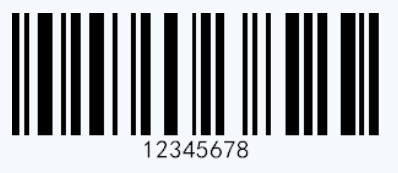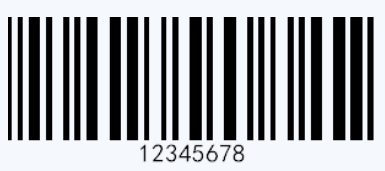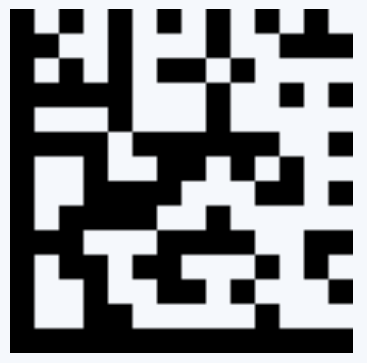Barcodes are an essential technology, widely used across multiple industries for tracking, identification, and management purposes. In this guide, we will explore the various types of barcodes, their specific applications, and how they contribute to efficient business operations.
Understanding Barcode Basics
A barcode is a representation of data in a visual, machine-readable form. Initially, barcodes systematically represented data by varying the widths and spacings of parallel lines. These are scanned and interpreted by optical scanners, commonly known as barcode readers.
Distinction Between 1D and 2D Barcodes
1D barcodes, also known as linear barcodes, contain information in one dimension and are scanned horizontally. They are limited in the amount of information they can hold. On the other hand, 2D barcodes store data both horizontally and vertically, which allows them to hold a much larger amount of information. They are typically scanned using camera-based readers like smartphones.
Common 1D Barcode Types
UPC Codes
Universal Product Codes (UPC) are prevalent in retail for tracking trade items at the point of sale. Two main variants are UPC-A, consisting of 12 numeric digits, and the more compact UPC-E, which compresses zeros for a shorter six-digit code.

EAN Codes
European Article Number (EAN) is similar to UPC but is more commonly used in international markets. EAN-13 contains 13 digits, whereas EAN-8 is used for smaller items that need a shorter barcode.

Code 39
This alphanumeric code is capable of encoding letters and numbers. It's widely used in diverse industries such as automotive and defense for labeling items in non-retail environments.

Code 128
Known for its high density and capacity to include extensive amounts of data, Code 128 is commonly used for logistics and transportation. Its application in the supply chain is vital for managing shipments and inventory.

Interleaved 2 of 5 (ITF)
This numeric-only barcode is often used for warehousing and bulk packaging. It encodes pairs of numbers into a set of parallel lines of varying widths.

Prominent 2D Barcode Types
QR Codes
Quick Response codes can store website URLs, phone numbers, or up to 4,000 characters of text, and can be easily scanned using most modern smartphones. They are extensively used in marketing and mobile payment systems.

Data Matrix
Especially used in electronics and healthcare, these barcodes are beneficial for marking small items due to their ability to encode a lot of information in a small space.

PDF 417
A stacked linear barcode is utilized in government IDs and certain transportation tickets. It can encode large amounts of data securely and is often used for high-security applications.

Industry-Specific Applications of Barcodes
1. Retail Management: Barcodes are extensively used in the retail industry for inventory management and at checkout points. They help in tracking products throughout the supply chain, managing stock levels, and speeding up the billing process by quickly scanning items.
2. Healthcare: In healthcare settings, barcodes contribute to patient safety and operational efficiency. They are used for patient identification, tracking medications, and ensuring that the correct medical procedures are administered to the correct patient.
3. Logistics and Transportation: Barcodes streamline operations in logistics by tracking goods from the point of origin to the point of delivery. They help in tracking shipments, reducing errors in delivery, and providing real-time updates of the goods in transit.
4. Manufacturing: In the manufacturing sector, barcodes are important for tracking production processes, managing inventory, and automating data collection, which enhances productivity and accuracy in the manufacturing chain.
How to Choose the Right Barcode?
Select a barcode based on your industry requirements, the type of information you wish to encode, and the scanning equipment available.
1. Retail
● UPC Codes: Primarily used in North America, Universal Product Codes (UPC) are essential for retail items. They are ideal for tracking stock in stores and speeding up the checkout process.
● EAN Codes: These are essentially the international counterpart to UPC codes and are used globally, especially in Europe. EAN-13 is standard for most products, while EAN-8 is used for smaller items that do not have enough space for a larger barcode.
Both UPC and EAN barcodes align with GS1 standards. GS1 is a global standard that ensures barcodes meet universally accepted specifications. These standards help maintain consistency across global supply chains and ensure compatibility and interoperability between different tracking systems.
2. Healthcare
● Data Matrix: This barcode can encode a lot of information in a small space, making it perfect for small medical equipment and medications. It’s used for labeling small items and ensures precise tracking and management of medical supplies.
● Code 128: Often used for labeling medical supplies and pharmaceuticals due to its high density and capability to encode extensive alphanumeric data.
3. Logistics and Transportation
● Code 128: This is highly favored in logistics for its ability to efficiently encode large amounts of data. It is often used for shipping labels, packaging, and distribution.
● Interleaved 2 of 5 (ITF): This numeric barcode is advantageous for its density and ability to encode pairs of digits, making it suitable for time-sensitive and bulk shipping operations.
4. Manufacturing
● Code 39: Known for its reliability and moderate density, Code 39 is useful in manufacturing for labeling items during the production process, especially when alphanumeric data is required.
● Code 128: Suitable for various applications within the manufacturing sector due to its versatility and ability to include significant amounts of information.
When selecting a barcode for your specific industry needs, consider the following factors:
● Data Capacity: How much information needs to be encoded?
● Size Requirements: How much physical space is available for the barcode?
● Environment: Will the barcode be subject to harsh conditions such as extreme temperatures, moisture, or direct sunlight?
● Scanning Distance and Equipment: How far will the scanner be from the barcode, and what type of scanners will be used?
How to Generate Barcodes?
Creating barcodes tailored to specific needs is streamlined with our free online barcode generator. The process begins with selecting the appropriate barcode type. Then input data and create the barcode. Customization options include adjusting size, color, and adding text labels. After final adjustments and previews, the barcode can be downloaded in various formats suitable for both digital use and printing.
Testing the barcode for accuracy with the intended scanning devices is a final step to ensure its functionality. Additionally, when selecting a barcode scanner, it's crucial to consider factors such as compatibility with barcode types, usage conditions, and device ergonomics.
Conclusion
Understanding the different types of barcodes and their applications can significantly optimize your business operations. Whether in retail, healthcare, or logistics, barcodes enhance operational efficiency and accuracy. Leverage this knowledge to create an appropriate barcode with our free online barcode generator for your business needs.
FAQs
1. What is the most popular barcode type?
The most common barcode type in use today is the UPC (Universal Product Code). It is widely used in the retail industry across the United States and Canada for tracking trade items in stores. Its popularity is due to its simplicity and widespread adoption in the retail sector, making it a standard for product identification at the point of sale.
2. How many types of barcodes are there?
There are dozens of barcode types, each designed for specific uses. Commonly, they are categorized into two main types: 1D (linear) barcodes and 2D barcodes. There are over 30 types of 1D barcodes, including UPC, EAN, and Code 128, and several 2D types such as QR Codes, Data Matrix, and PDF 417. The diversity in barcode types reflects the wide range of uses and environments they are designed for.
3. What is the difference between a barcode and a QR code?
The main difference is the amount of data they can hold. QR codes can hold more data and include information both horizontally and vertically, unlike barcodes which are limited to a few alphanumeric characters.




